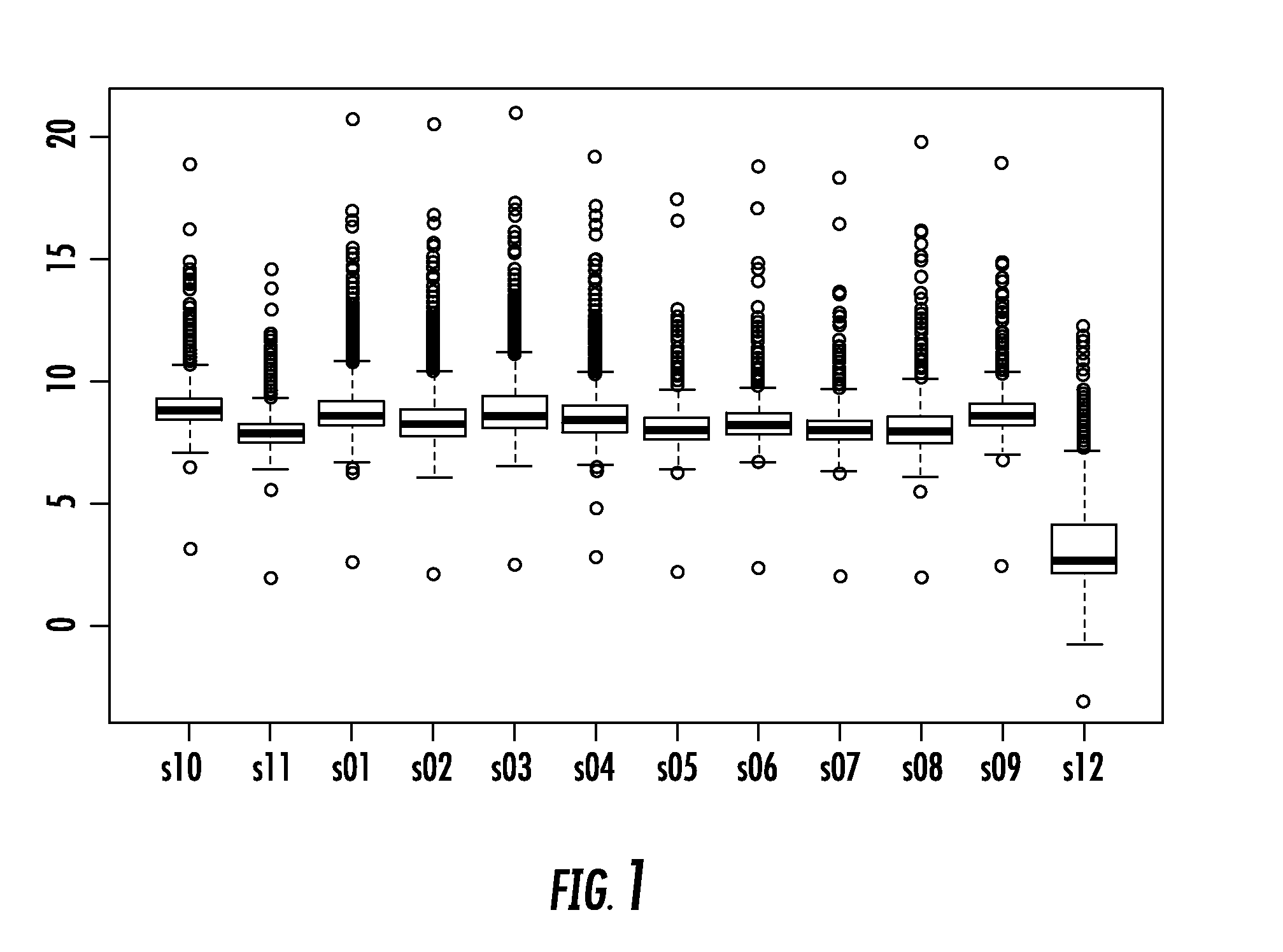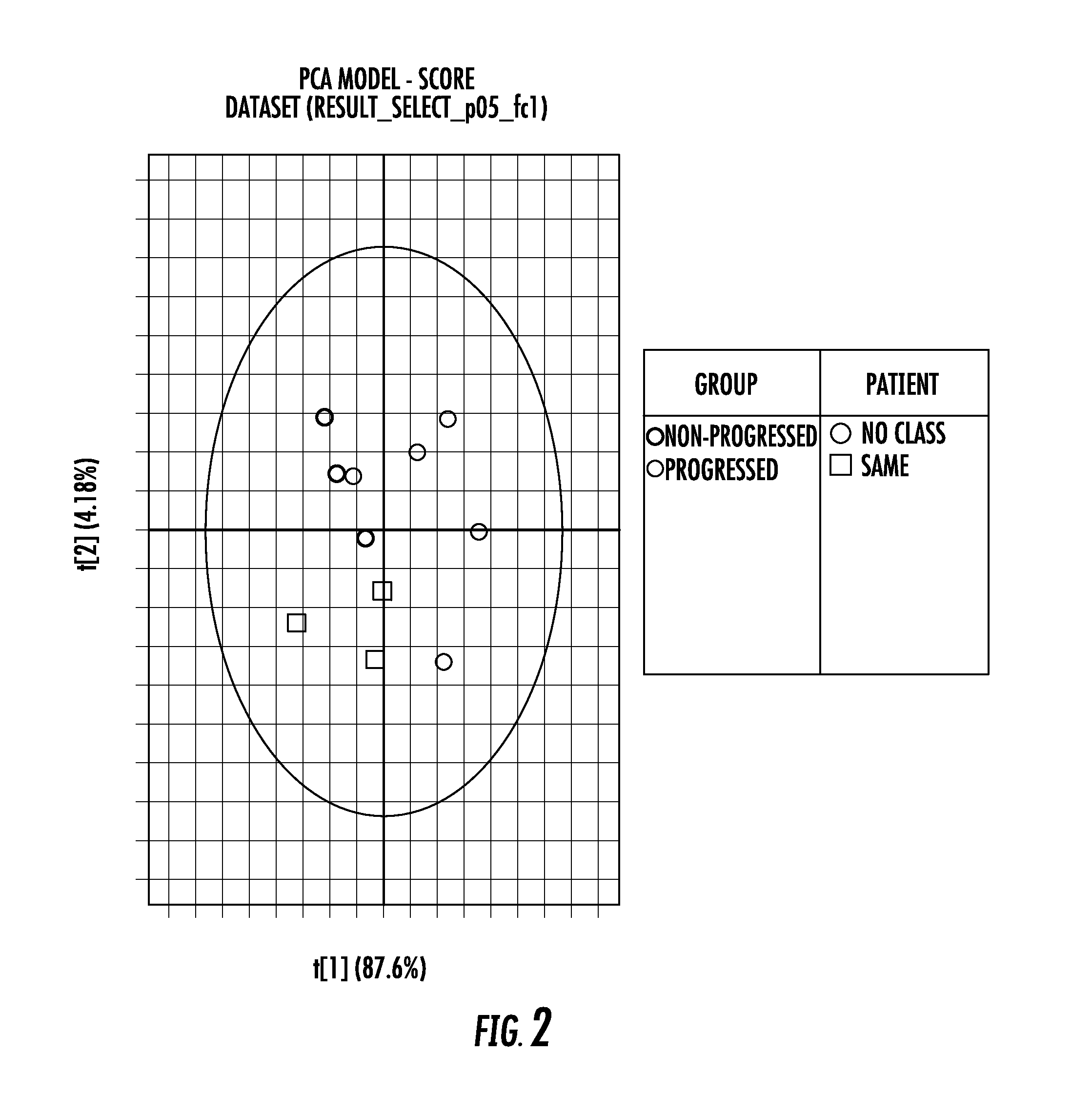Microrna signature for predicting progression of barrett's esophagus
- Summary
- Abstract
- Description
- Claims
- Application Information
AI Technical Summary
Benefits of technology
Problems solved by technology
Method used
Image
Examples
example 1
Nanostring Analysis of miRNA Profiles in Patients with Barrett's Esophagus without Progression to Dysplasia as Compared to Those with Barrett's Esophagus Progressed to Dysplasia and Carcinoma
[0043]Introduction
[0044]Recent gene expression studies identified a set of small number of genes that are differentially expressed in esophageal cancer but no information is available for assessing their impact on disease prognosis. In recent years there has been a dramatic increase in the discovery of microRNAs (miRNAs) that are associated with cancer aggressiveness. The miRNAs are naturally occurring small non-coding molecules found in humans that regulate gene expression and consequently have a potential functional role in a wide array of cellular processes, including differentiation, proliferation, and apoptosis [Li Y, et al. Pharm Res 2010 27(6): 1027-1041; Wang Z, et al. Drug Resist Updat 2010 13(4-5):109-18].
[0045]To date, less than 20 publications in this field are available and all inve...
PUM
| Property | Measurement | Unit |
|---|---|---|
| Biological properties | aaaaa | aaaaa |
| Level | aaaaa | aaaaa |
Abstract
Description
Claims
Application Information
 Login to View More
Login to View More - R&D
- Intellectual Property
- Life Sciences
- Materials
- Tech Scout
- Unparalleled Data Quality
- Higher Quality Content
- 60% Fewer Hallucinations
Browse by: Latest US Patents, China's latest patents, Technical Efficacy Thesaurus, Application Domain, Technology Topic, Popular Technical Reports.
© 2025 PatSnap. All rights reserved.Legal|Privacy policy|Modern Slavery Act Transparency Statement|Sitemap|About US| Contact US: help@patsnap.com


